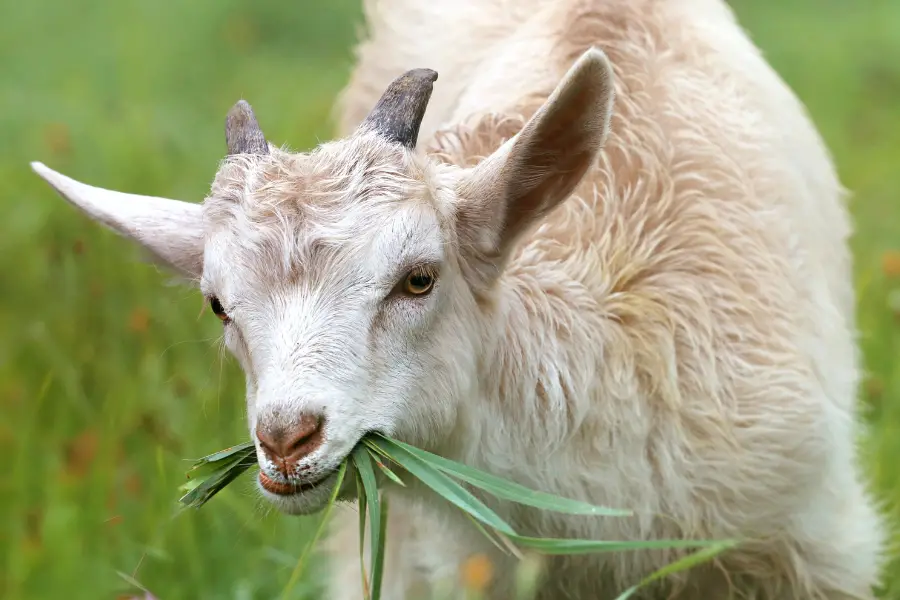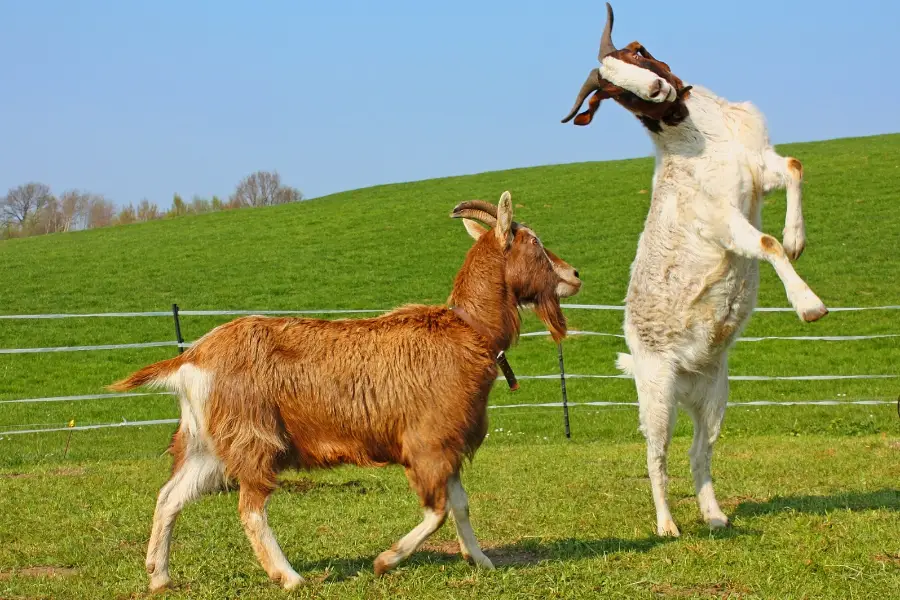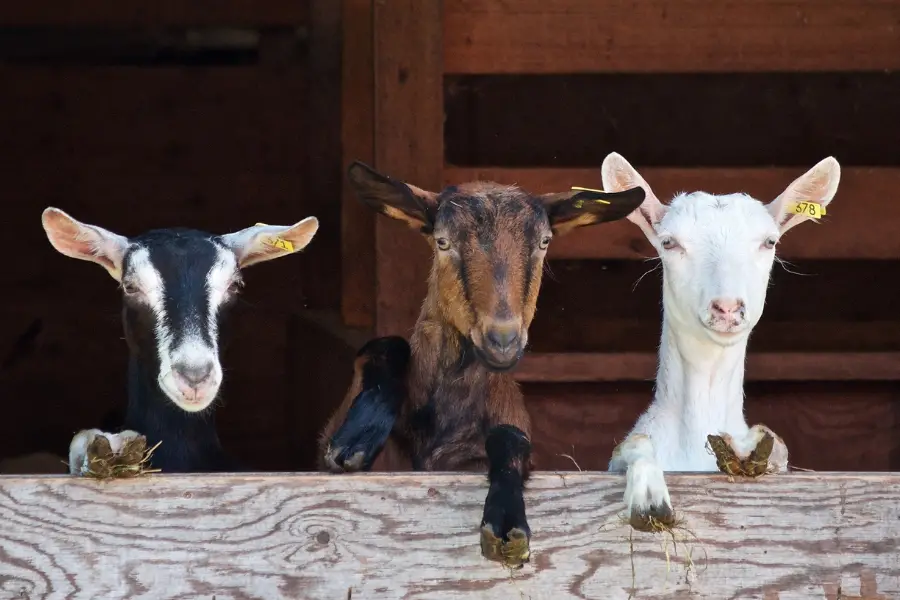
Saanen goats, also known as the “Holstein of the goat world,” are a popular breed of dairy goats originating from the Saanen Valley in Switzerland. They are recognized for their high milk production, docile temperament, and adaptability to various climates. In this article, we will delve into the various aspects of Saanen goats, including their milk production, advantages, disadvantages, and pricing.
Table of contents
Origins of Saanen Goats
Saanen Goats Roots in Switzerland
Saanen goats trace their roots back to the Saanen Valley in Switzerland, where they were first developed in the late 19th century. The breed takes its name from the picturesque Saanen Valley, located in the Bernese Oberland region.
The development of Saanen goats can be attributed to the local farmers’ desire to breed a highly productive and efficient dairy goat. The farmers selectively bred local goats with white coats and superior milk production traits, resulting in the distinct Saanen breed we know today.
The initial breeding efforts focused on improving milk yield, hardiness, and adaptability to the harsh alpine climate of the Saanen Valley. These early breeders sought to create a dairy goat that could thrive in the demanding conditions of the region while providing substantial milk production to support the local economy.
Moving to the Rest of the World
Over time, Saanen goats gained popularity beyond Switzerland’s borders due to their exceptional milk production capabilities. The breed’s reputation spread, leading to its widespread adoption in many countries around the world.
To maintain and improve the breed’s desirable traits, dedicated breeders established Saanen goat registries and breeding associations. These organizations have been instrumental in preserving the breed’s purity and ensuring the continuation of its superior milk production abilities.
Today, Saanen goats can be found in various countries, including the United States, Canada, Australia, New Zealand, and many European nations. They have become a favored choice for commercial dairy farmers and small-scale producers alike due to their impressive milk yield, adaptability, and docile temperament.
The Saanen breed’s success can be attributed not only to its origins in the Saanen Valley but also to the efforts of breeders worldwide who have continued to refine and enhance the breed’s genetic traits. This dedication has contributed to the Saanen goat’s reputation as one of the premier dairy goat breeds globally.

Saanen Goat Appearance
Saanen goats are known for their distinctive appearance, which sets them apart from other goat breeds. Here are some key characteristics of Saanen goats’ physical appearance:
Size
Saanen goats are considered a large breed. Adult does typically weigh between 150 to 200 pounds (68 to 90 kilograms), while bucks generally range from 180 to 250 pounds (82 to 113 kilograms). They have a robust and well-muscled body structure.
Coloration
Saanen goats are predominantly white in color, although some may have small pigmented patches on their skin or coat. Their white coloration allows them to reflect sunlight, reducing heat absorption and making them well-suited for warmer climates.
Coat
Saanen goats possess a short, fine-textured coat. The hair is usually soft and smooth to the touch, making grooming and maintenance relatively easy. The absence of long hair or a dense undercoat contributes to their adaptability in various climates.
Head
Saanen goats have a straight or slightly dished facial profile. Their heads are typically of medium size, with ears that are upright and alert. The ears are usually of medium length and can be slightly curved forward.
Horns:
Saanen goats have been bred to be polled, meaning they do not have horns. This genetic trait eliminates the need for horn removal procedures, simplifying management and reducing the risk of injury to both the goats and their handlers. However, some Saanen do have horns.
Body Shape
Saanens have a rectangular body shape, characterized by a level back, broad chest, and well-sprung ribs. They have a strong and well-balanced frame, providing the foundation for their high milk production capabilities.
Legs and Feet
Saanen goats have strong and sturdy legs that are positioned squarely beneath their bodies. Their feet are well-formed and adapted to various terrains, enabling them to move and forage efficiently.
Udder
The udder of a Saanen doe is typically well-developed and of medium size. It exhibits good attachment and proper teat placement, facilitating easy milking and efficient milk extraction.
The overall appearance of Saanen goats showcases their elegance, strength, and functionality as a dairy breed. Their white coat, along with their clean and tidy appearance, contributes to their appeal in show rings and commercial dairy operations alike.

Milk Production
Saanen goats are renowned for their exceptional milk production capabilities. They have a high milk yield, making them one of the most sought-after dairy goat breeds worldwide. On average, a Saanen goat produces approximately 3,000 to 4,000 pounds of milk per year. Some well-managed Saanen does have been known to produce even higher volumes. The milk is of excellent quality, having a high butterfat content ranging from 3% to 4%.
Saanen Goat Advantages
- High Milk Production: Saanen goats are exceptional milk producers, making them ideal for commercial dairy farming. Their high yields contribute to a profitable dairy business.
- Adaptability: Saanen goats adapt well to various climates, making them suitable for different regions. They can thrive in both cold and hot environments.
- Docile Temperament: Saanens are known for their calm and gentle nature, making them easy to handle and manage. Their friendly temperament also makes them suitable for first-time goat keepers and families with children.
- Longevity: Saanen goats have a relatively long lifespan compared to other breeds, often living up to 12 to 15 years with proper care and management.
- Versatility: In addition to milk production, Saanen goats are often used for meat production and as show animals due to their impressive conformation and attractive appearance.
Saanen Goat Disadvantages
- Feed Requirements: Saanens have a higher feed intake compared to other goat breeds due to their large size and high milk production. This can lead to increased feed costs, particularly if pasture resources are limited.
- Susceptibility to Health Issues: Saanens are prone to certain health problems, including mastitis, foot rot, and internal parasites. Regular monitoring, preventive measures, and veterinary care are essential to maintain their health and productivity.
- Higher Initial Investment: Saanen goats typically have a higher purchase price compared to other goat breeds. The initial investment may be a significant consideration for those starting a dairy goat enterprise.

Saanen Goat Price
The price of Saanen goats can vary depending on several factors, including age, gender, pedigree, and overall quality. On average, a healthy Saanen kid (young goat) may cost between $150 and $300. Prices for mature does (female goats) range from $300 to $600, while bucks (intact males) can range from $200 to $500. Show-quality animals with exceptional bloodlines and conformation may command higher prices.
It’s worth noting that prices may vary based on the breeder, location, and market demand. Additionally, registered or pedigreed Saanen goats generally have higher price tags due to their traceable lineage and potential for improved genetic traits.
Popularity of Saanen Goats Worldwide
Saanen goats have gained significant popularity and recognition around the globe due to their exceptional milk production and other favorable traits. While they can be found in numerous countries, certain regions stand out as particularly favorable for Saanen goat farming. Here are some areas where Saanen goats are notably popular:
Switzerland
As the birthplace of the breed, Saanen goats hold immense significance in Switzerland. The breed is deeply ingrained in Swiss farming traditions, and Saanen Valley remains a hub for Saanen goat breeding and dairy production.
United States
Saanen goats have established a strong presence in the United States. They are one of the most popular dairy goat breeds in the country. American breeders have actively worked to improve the breed’s genetics, resulting in high-quality Saanens that excel in milk production. The goat milk is used for drinking, in addition to being made into many products, such as goat milk eczema soap, goat milk cream, goat milk esbilac, and goat milk products for dogs and cats.
Canada
Canada is home to a thriving Saanen goat industry. The breed’s adaptability to diverse climates has contributed to its popularity in various Canadian provinces. Saanen goats are widely used for commercial dairy production as well as for show purposes.

Australia
Saanen goats have gained traction in Australia, particularly in regions with favorable dairy farming conditions. Australian breeders and dairy farmers appreciate their high milk yields and adaptability to different climates, including both temperate and arid regions.
Saanen goats are used widely in Australia to make goat milk formula for infants and toddlers.
New Zealand
New Zealand’s dairy industry has also embraced Saanen goats. The breed’s ability to produce substantial quantities of high-quality milk aligns well with the country’s focus on dairy farming. Saanen goats have become a common sight on New Zealand’s dairy farms. Som Saanen goats in New Zealand are sable colored.
Europe
Saanen goats have spread throughout Europe and are popular in several countries. These include Germany, France, Italy, the Netherlands, and the United Kingdom. European farmers value the breed’s excellent milk production capabilities and its suitability for a range of climates within the continent.
South Africa
Saanen goats have made their mark in South Africa’s dairy industry. The breed’s adaptability to the country’s diverse landscapes, coupled with its high milk yields, has led to its widespread adoption by commercial dairy farmers.
It is important to note that Saanen goats are versatile and adaptable, making them suitable for various regions worldwide. Their popularity extends beyond the mentioned countries, with breeders and farmers in other parts of the world appreciating their milk production prowess, docile temperament, and adaptability to different climates.
The widespread distribution and popularity of Saanen goats illustrate their reputation as an excellent choice for dairy farming and their ability to thrive in diverse agricultural landscapes.
Video: University of Minnesota Saanen Dairy Goats
This comprehensive video from the University of Minnesota covers what it is like to start and manage a Saanen Dairy Goat farm. Dr. Travis Hoffman and his sheep and goat team have made an amazing video for anyone who is involved with dairy goats!
Conclusion
Saanen goats are highly regarded for their outstanding milk production, adaptability, and docile temperament. Their ability to thrive in various climates, coupled with their versatile nature, makes them a preferred choice for dairy farmers and enthusiasts. While they require diligent care and attention to maintain their health, the benefits they offer in terms of milk yield and longevity make them a valuable addition to any dairy goat enterprise.
Saanen Goat FAQs
A key characteristic of the Saanen goat is their high yield of milk and have set many records in milk production. They are also one of the largest dairy goat breeds, which explains their high milk production and are a hardy goat for the rugged Alpine terrain.
Saanen goat does are capable of bringing in 2545 pounds of milk a year. The butterfat content should be around 3% to 4%.
At a minimum, your Saanen doe should weigh 135 pounds but may reach more than 155 pounds.
Saanen goats have a specific breeding season which falls somewhere in late summer through early winter, though sometimes goats breed outside this time. This breeding season may last 18 to 21 days. The does will usually be in heat for a few hours to a few days.
The largest of the dairy breeds, Saanen does are at least 30 inches tall and 135 pounds, while the bucks are 32 inches tall and 160 pounds or more.
Saanen goats hail from the Swiss valley by the same name.
Unlike some other breeds of goats, Saanen goats should only be light-colored, with coats between white and cream. They are also recognizable by size, being among the largest dairy breeds.
Depending on age, gender, and breeding, Saanen does should weigh at least 135 pounds and bucks should weigh at least 160 pounds are more.
The cost of a Saanen doe when purchased as a purebred kid will run you about $300 for the higher qualities of goats. The cost will vary a lot between breeders, and also depends on the age of the animal and if that particular goat is well-bred and a good candidate for breeding.
Saanen goats have been bred to have no horns, although there are strains that do still have horns.





2 responses to “Saanen Goats: A Comprehensive Guide”
I have a saane goat, I deworm her and followed the directions, she is really sick now , won’t eat,is this normal? I will call the vet and have her looked at. She was fine yesterday. But I just went check on her and she is not doing good.
Nice research report, please correct the yeild of milk by saanen goats are 1 gallon or 3 liters per goat. very informative report. thx